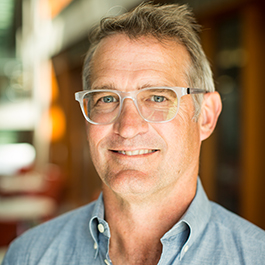A Capstone Culmination
MPD2 students spend almost a year creating a product they think can impact the public and attract customer interest.
What is a product that doesn't exist that could have an impact and attract customer interest?
Students in Northwestern Engineering's Master of Product Design and Development Management (MPD2) program are asked that very question as an introduction to their capstone project, a three-quarter long challenge to develop a potential solution to fill the void they identified.
 "Throughout the MPD2 program, students are incrementally learning things that can be directly applied to their professional work," said MPD2 director and professor Jim Wicks. "The whole point of the capstone project is to manifest all the learnings from the classroom into one active project that allows students to explore the potential of themselves as an individual and as part of a team."
"Throughout the MPD2 program, students are incrementally learning things that can be directly applied to their professional work," said MPD2 director and professor Jim Wicks. "The whole point of the capstone project is to manifest all the learnings from the classroom into one active project that allows students to explore the potential of themselves as an individual and as part of a team."
The current structure of the MPD2 program is a collection of five-week and 10-week courses spread over two years. Students pursue their capstone during their second year, in addition to their 12 designated courses. Six of those courses are designed to directly apply to the capstone experience.
The second year begins with students taking a course about customer-driven opportunities. At the same time, they work with a team of classmates to explore opportunities for potential capstone projects through ethnographic and secondary research — common elements of the design process, Wicks said. Five weeks later, students examine each of their opportunity areas and begin to zero in on which has the most potential. While in the classroom, they develop a firm understanding of all aspects of the product design and development process.
"Heading into their next quarter, they already have a focus area," Wicks said. "Then it's all about further expanding and defining what potential solutions could be in that area."
To help with that process, students study techniques and tactics used to enhance creativity and innovation.
By the midway point of their second year, the teams should have a clear concept in place of what they want to create. The students have defined what their solution might be — now it's time to refine it through design and research iterations. To augment that process, students take a course on essentials of design, which focuses on the principles of the visual aspect of design and provides deeper instruction about designing for different audiences.
"The first part of the capstone project is about desirability," Wicks said. "As students enter their final quarters, the project becomes about feasibility and viability."
When students begin their final quarter, their focus within the capstone project is on further developing their design, solidifying their value proposition, and exploring different ways they could potentially bring their product to market. That process is supported by a quarter-long course on business model design. At the conclusion of the quarter, student teams present a 20-minute pitch — including their solution, their business case, and the design of their product — to an audience of industry leaders and potential investors.
The majority of MPD2 students are enrolled in the part-time program, and Wicks understands that spending nearly a year on a single project on top of other classes and work can be arduous. The payoff, however, is more than worth it.
"Just like the rest of our classes, the capstone project allows MPD2 students to take what they're learning in the classroom and apply it to a real-world problem," Wicks said. "Just as importantly, when they complete their capstone, they will be fully armed with a toolkit that will help them elevate their career from where they are to where they think they can be."
